
The monastery of Saint (Honest or Holy) cross or the monastery of Timios Stavros (Timios Stavros Monastery, a Greek name Μοναστήρι του Τιμίου Σταυρού) - stone monastery, considered one of the oldest and most historic monasteries on the island of Cyprus.
This monastery is located in the current tourist village Omodos and serves as a decoration and pride of the village.
Currently, the monastery of the Holy cross is not valid for its intended purpose. For parishioners open the Church of the Holy cross. The temple holds several important relics and operates a small Museum complex.
Initially, the entrance to the monastery was through a vaulted entrance, the so-called "cameraphoto" (arched door), which is located on the North side. According to legend, vaulted door that resembles the door of a fortress, with heavy, double crossbars, not opened, when was the Turks who intended to harm the monastery.
Today to enter the monastic complex on the main square of the village of Omodos through the Western entrance, opened not so long ago.
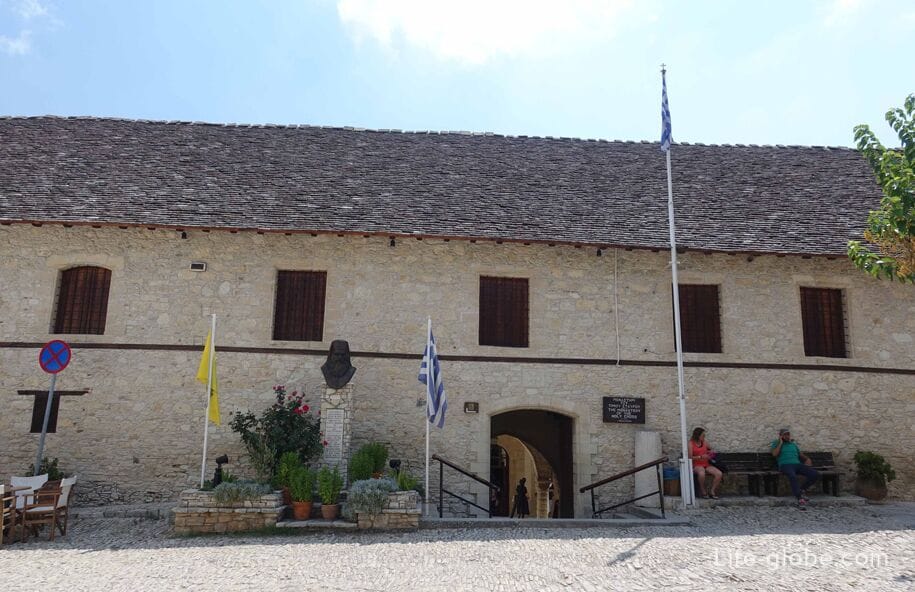
At the entrance to the monastery you can see the bust of the Abbot of Dositheos, who was hanged in 1821, charged with the preparation of the uprising against the Ottoman rule. During the life of Dositheos did much for the prosperity of the monastery.
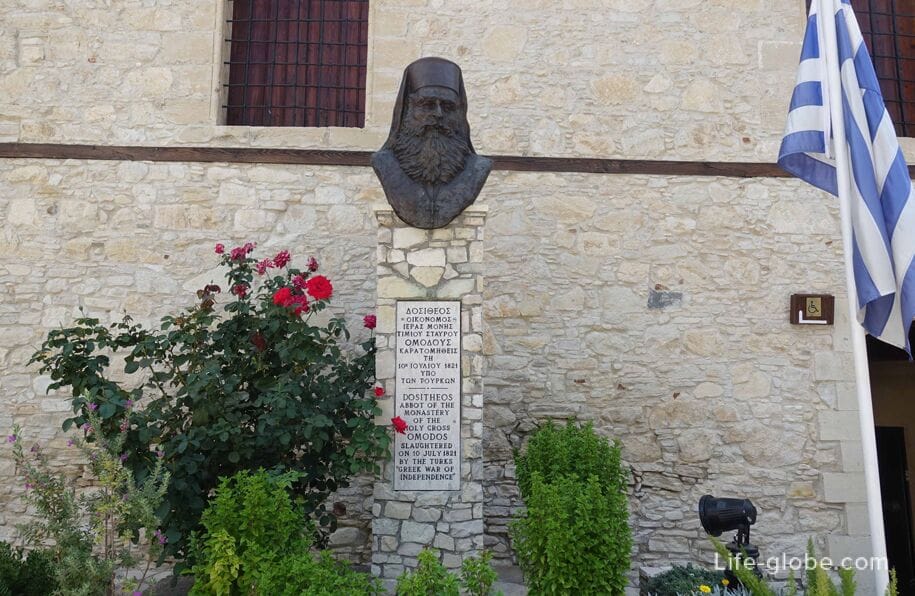
Once inside, find yourself in the courtyard of the monastery. The monastery is quite characteristic architecture - a large two-story complex in the shape of the Greek letter Π, framed by arched galleries surrounding the main Church from the North, West and South.
Earlier internal the monastery complex was composed of stone cells, cellars and hostelries. In the Northern part of the monastery complex was located cells, the Synod, and rooms for visitors, and on the South side were warehouses, stables and facilities for livestock.
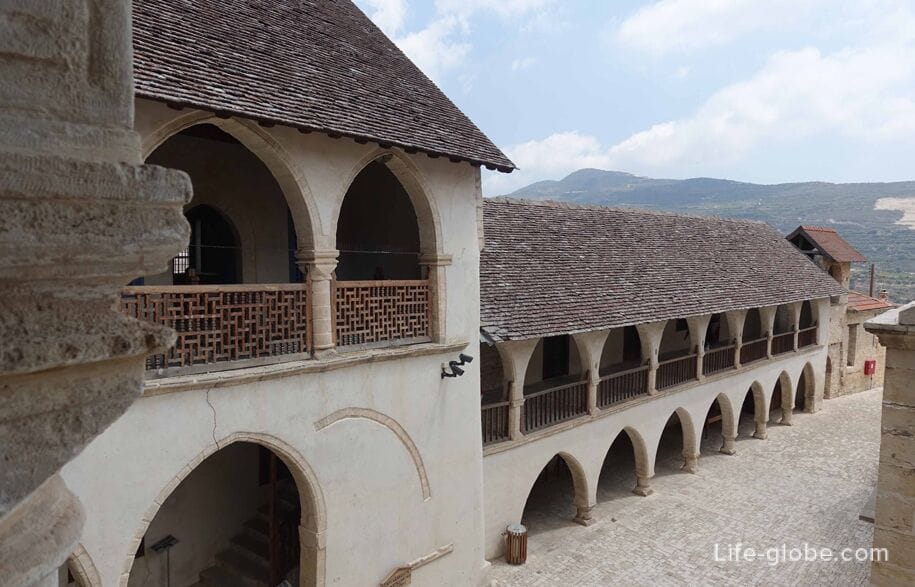

In the centre of the complex stands the Church - the current Church of the Holy cross. The upper part of the temple roof is framed by a triangular pediment, and on the East side of the temple is crowned with an apse and bell tower, the entrance to which is in the altar space.
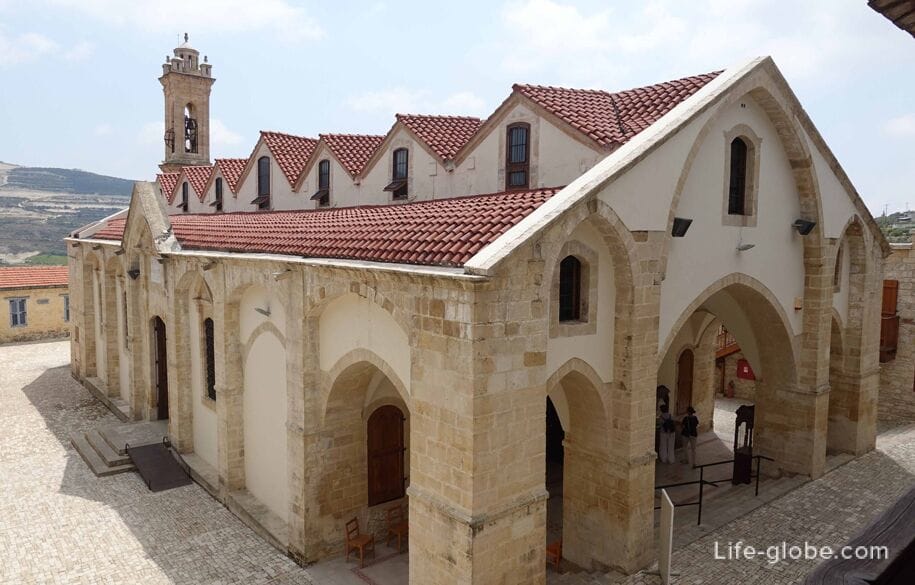
To enter the temple it should be in properly - sealed clothes. If you are dressed very summery (too open clothes), near the entrance you can take capes.
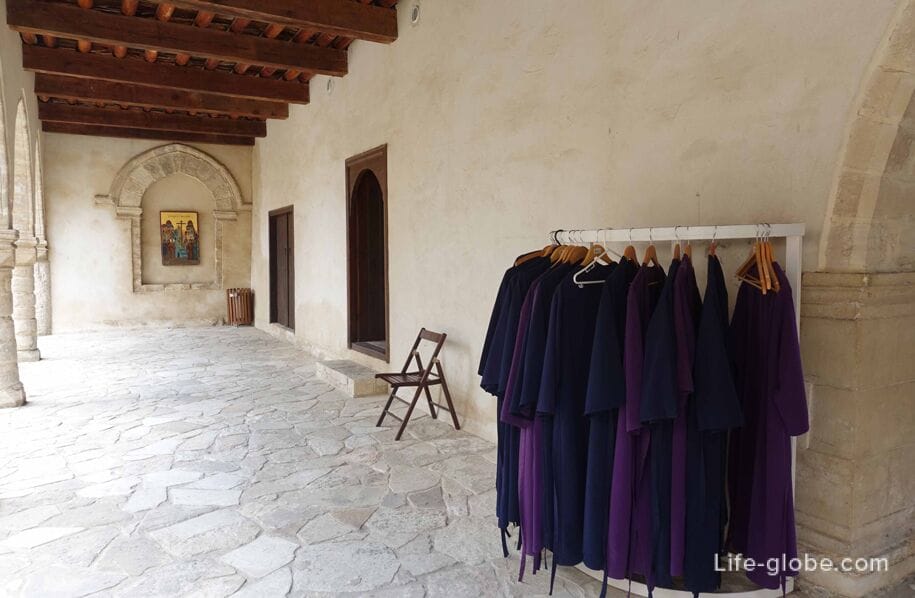
The entrance to the Church
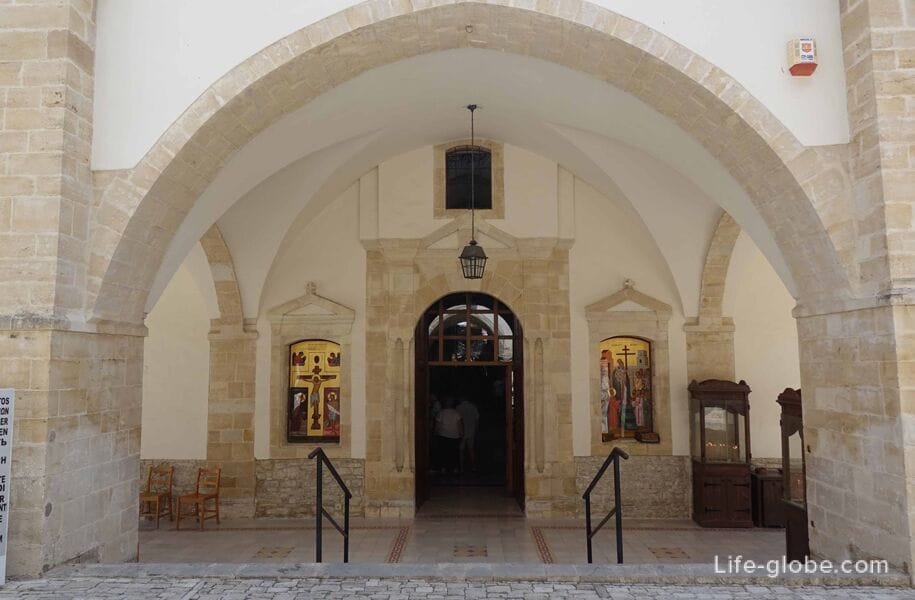
The interior of the Church
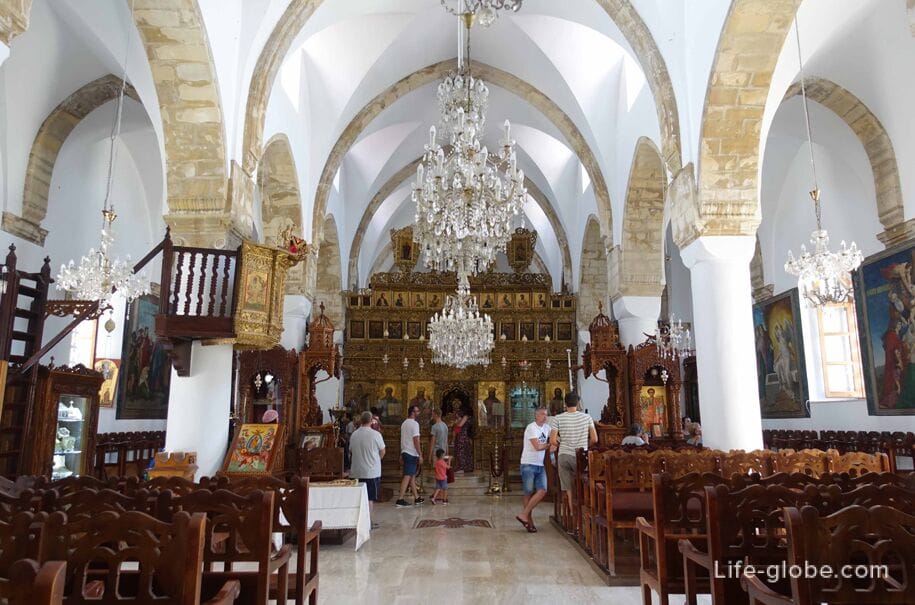
In Holy cross monastery are priceless heirlooms that established his reputation, and glorified:
a Great part of the Holy cross with the Holy rope. It is a wooden Cross with gold and silver plating, placed in a special canopy on the iconostasis of the Church. Its surface is decorated with various depictions from the life of Christ. On the four ends of the cross are the four evangelists. In the center of the cross, in the field, close Golden gate, is the "Agios Kanavos" ("Holy ropes of hemp"), also called "the heart of the tabernacle." The legend says that the piece of rope that the Romans used to tie Christ to the Cross and it is the only fragment surviving in the world;
the cross, which, according to Costas Nicolaides, "placed the little Cross", the same one that was found in the cave;

- cross "Panaretos" (sidebartitle) - the old Cross of Anogyra;
- the skull of Apostle Philip are stored in gold and silver-plated box in the shape of a pyramid. The authenticity of the skull is witnessed by the seals of the Byzantine emperors Theodosius the Great and Heraclius;
- a wooden cross with a height of 15 inches, and decorated with precious stones;
a fragment of stone from Calvary, which was obtained at the initiative of the Manager of the Church of Callistratus Papademas;
- the remains of 26 saints, including relics of St. Nicholas the Wonderworker, great Martyr Barbara, great Martyr Marina Holy Martyr Charalambos, great Martyr and healer Panteleimon, Holy Martyr Tryphon and many other items, including sacred vessels, precious stones and other offerings.
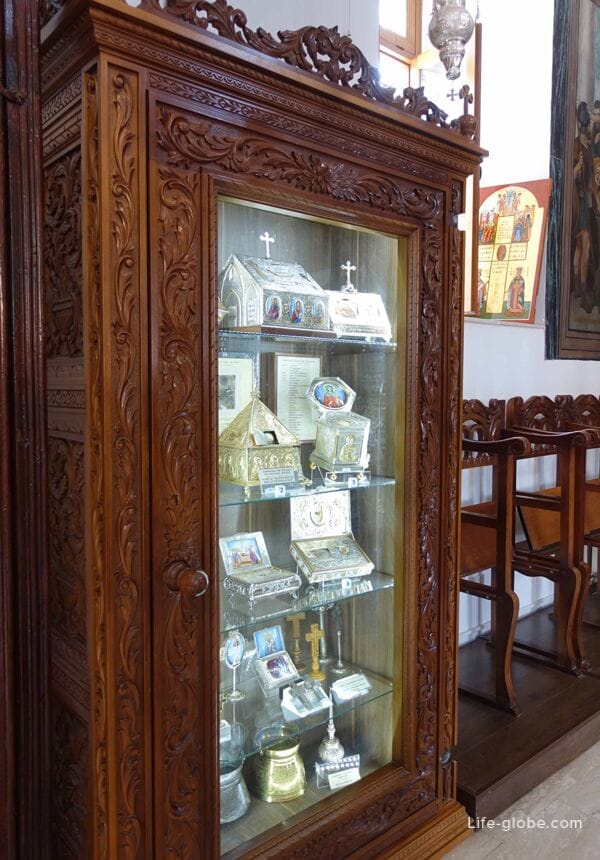
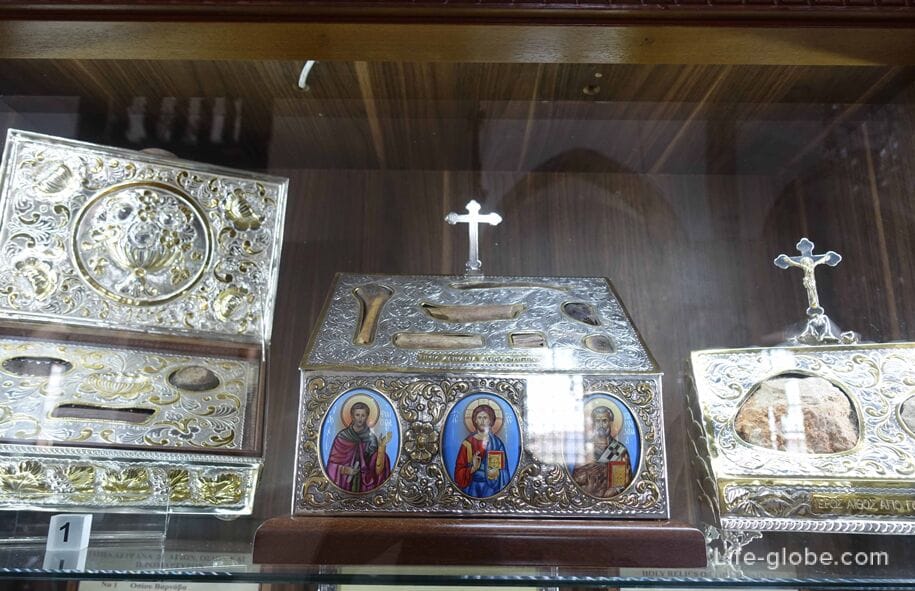
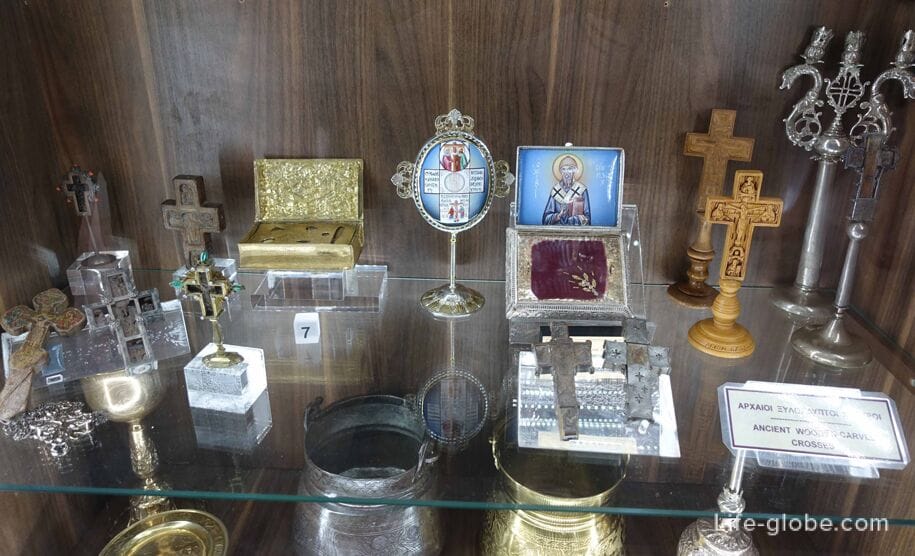

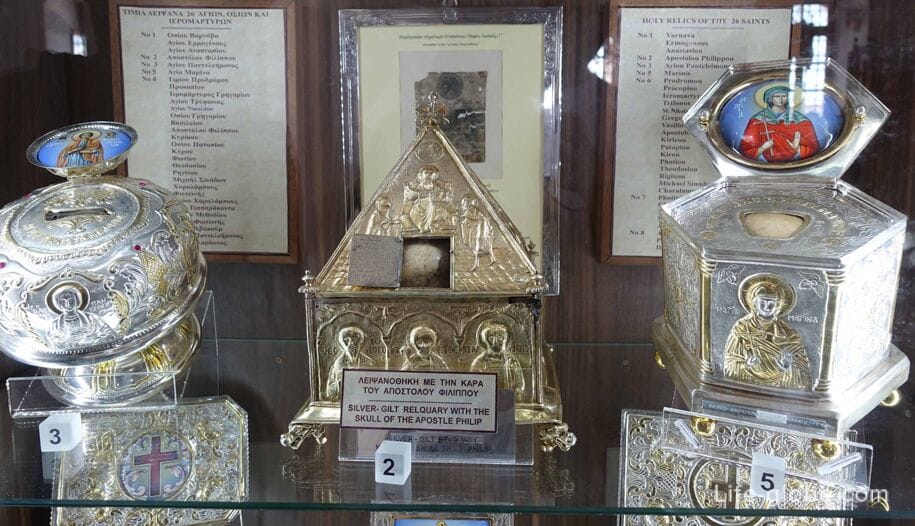
In the premises of the monastery opened a Museum complex, where you can visit several rooms.
A special work of art are the wooden ceilings that adorn the corridors and halls of the monastery. They are samples handmade in the Rococo style, made with remarkable artistry of many small pieces of wood.
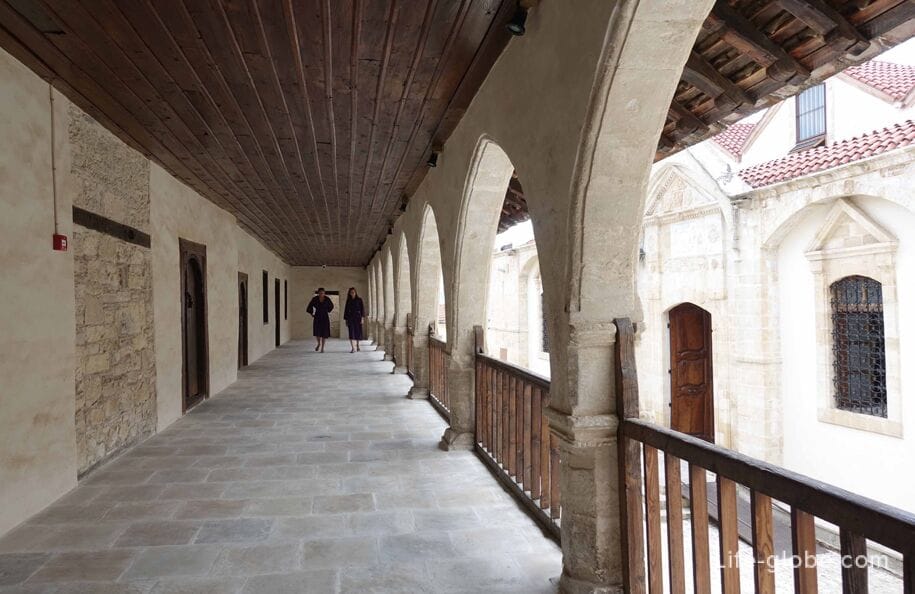


Special attention among the wooden cutting attracts the hall of the Synodicon, which is an ancient monument. In the room stand wooden ceiling and the "throne" of Timios Stavros, carved out of wood of walnut. With double-headed eagle on top of the throne serves as a crypt for the Holy cross. Also noteworthy are the four surviving chairs-benches made of walnut wood.
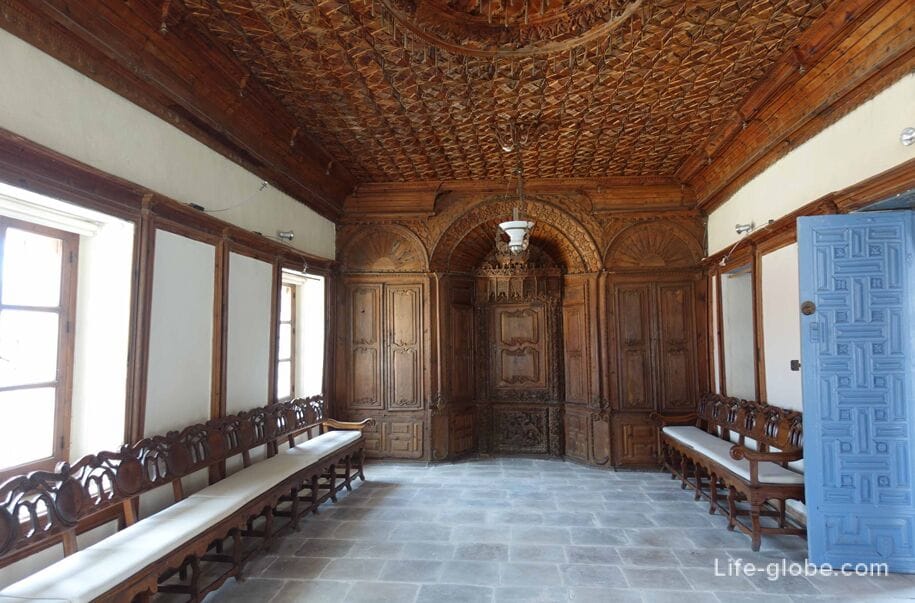
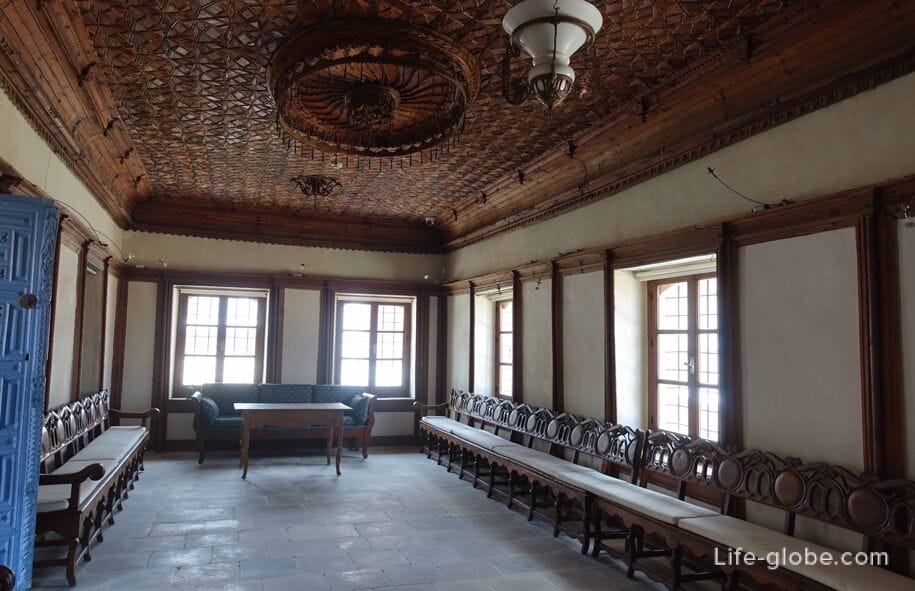
The cell - say, the one which, according to legend, stayed Queen Helena, who has given the monastery and its main relic - a particle of the Holy cross.
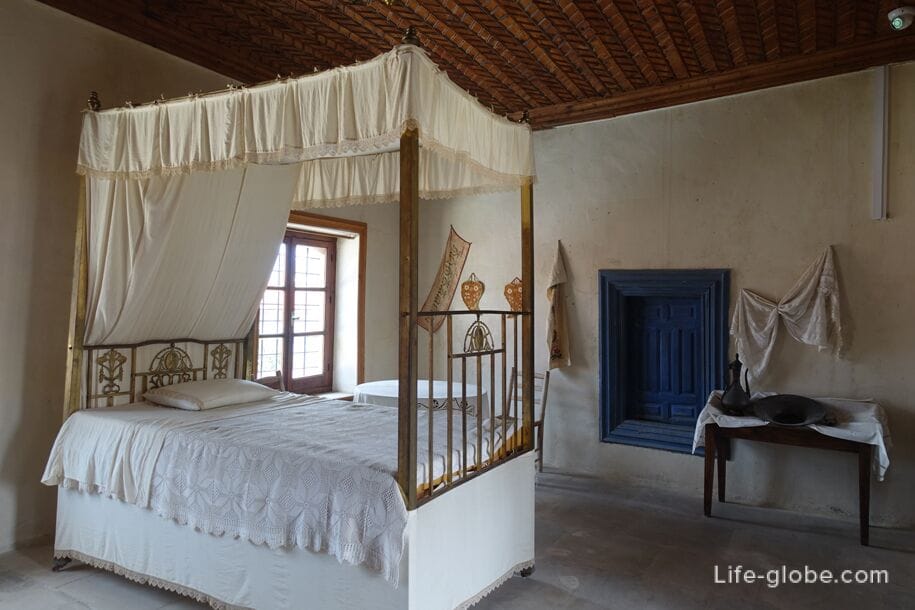

The Museum room of Byzantine icons (or Byzantine art), representing a vast collection of icons and Church utensils. Among other things, here are: the image of Constantine and Helen framed by the stories of the finding of the True cross, the image of the Archangel Gabriel, the apostles Peter and Paul, as well as such subjects as the Resurrection of Lazarus and the Entry of Christ into Jerusalem.
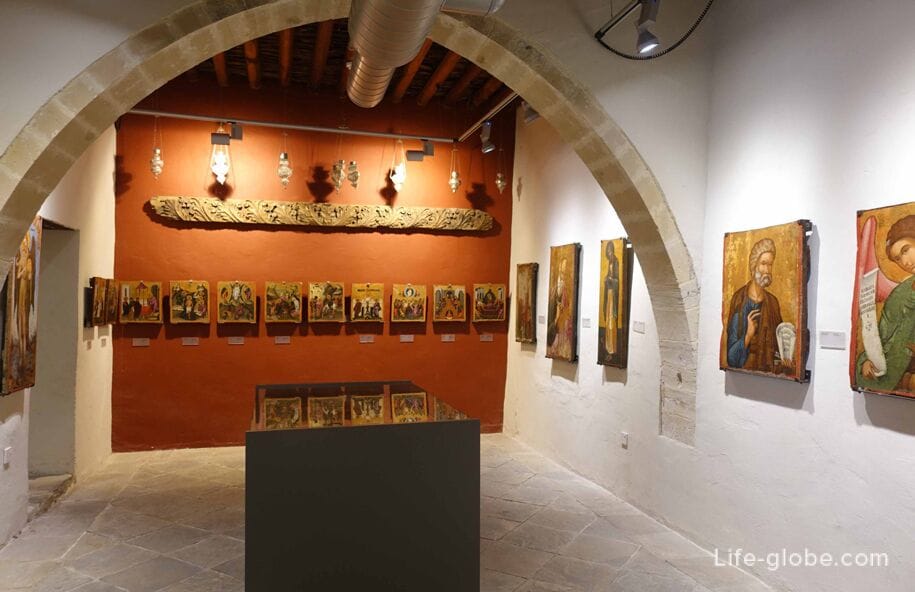
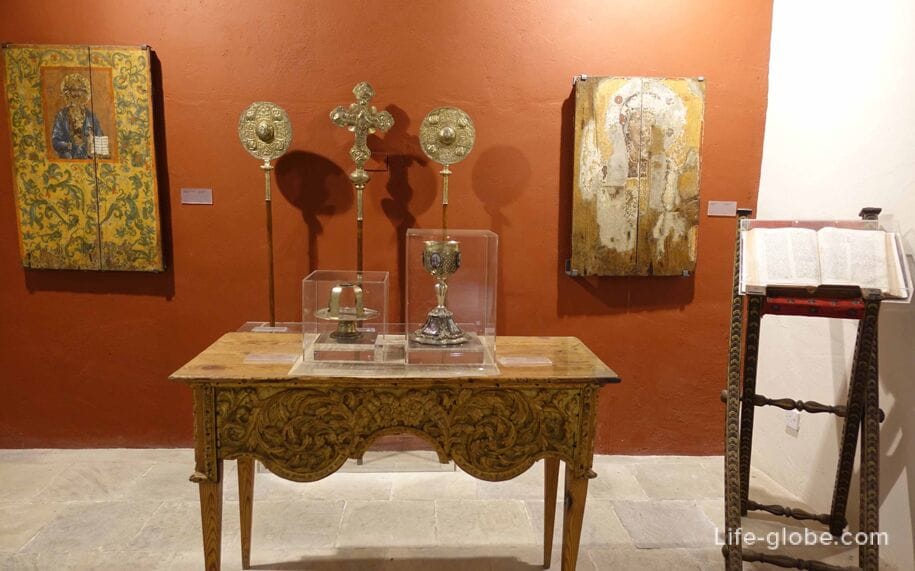
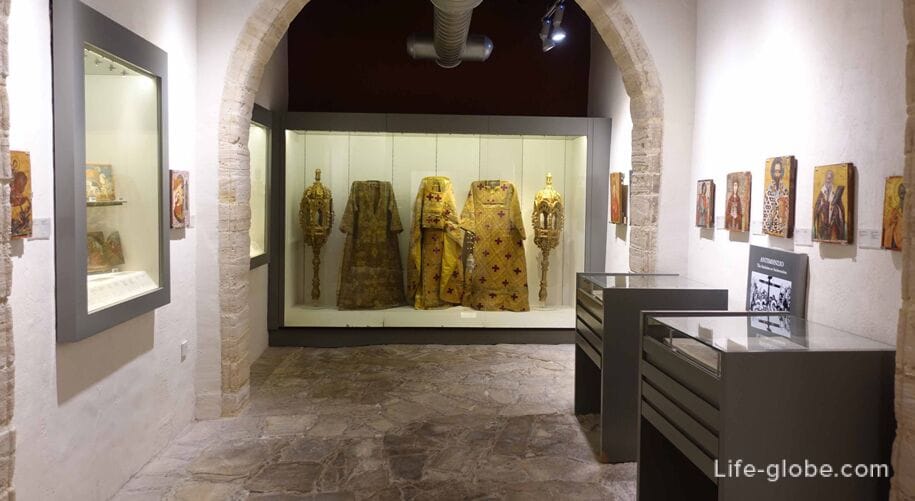
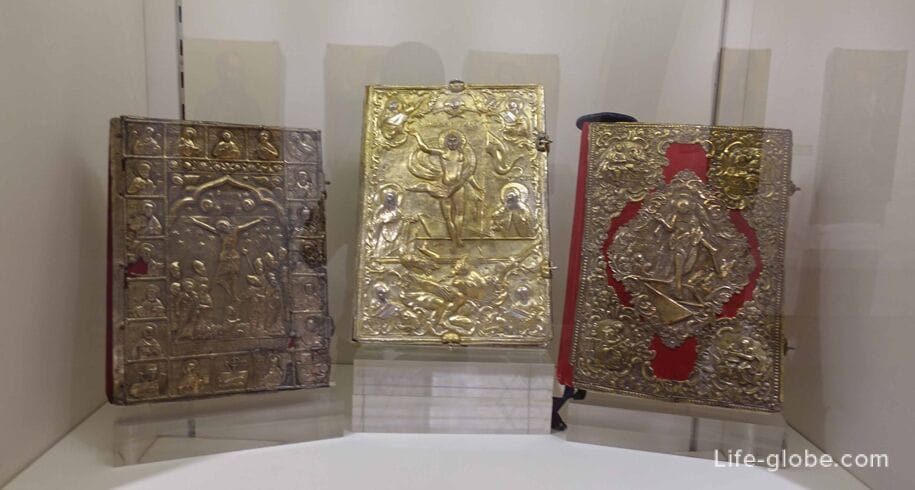

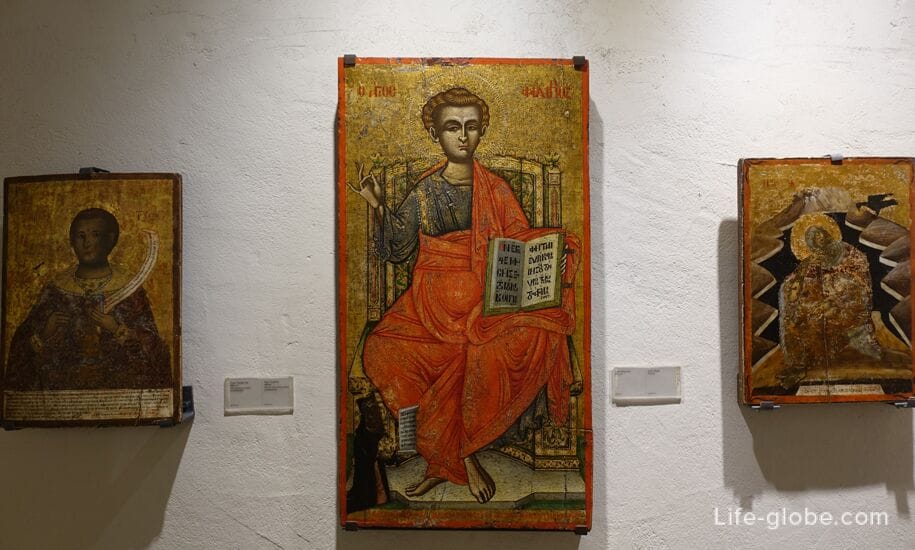

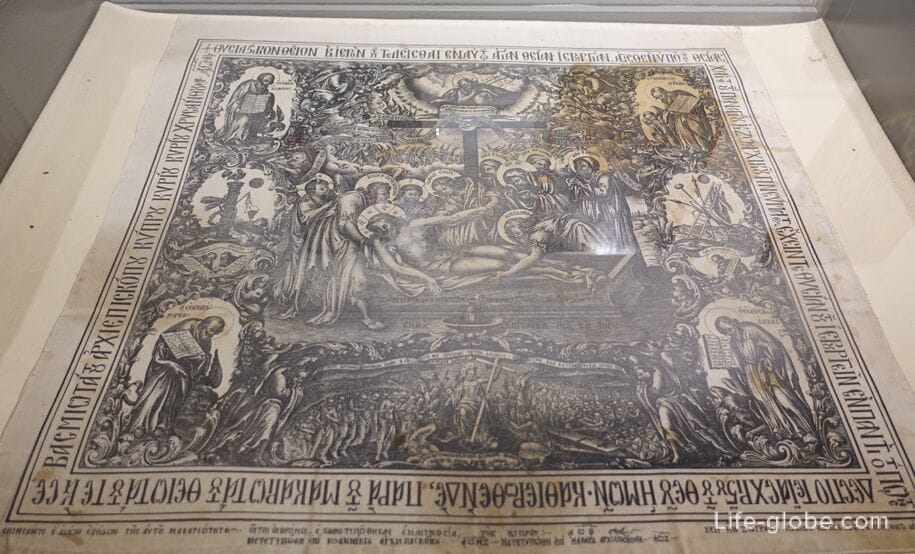
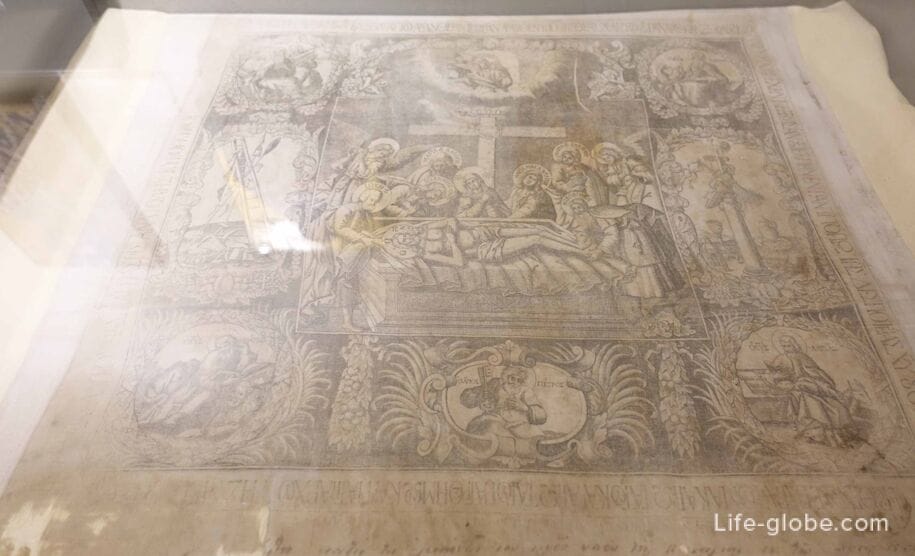
In one of the halls now are the collection of the Museum of the national struggle for the liberation of Cyprus 1955 - 1959 - first created after the epic struggle. Here are stored the various materials associated with the process of struggle, personal objects, uniforms, documents and photos of soldiers.
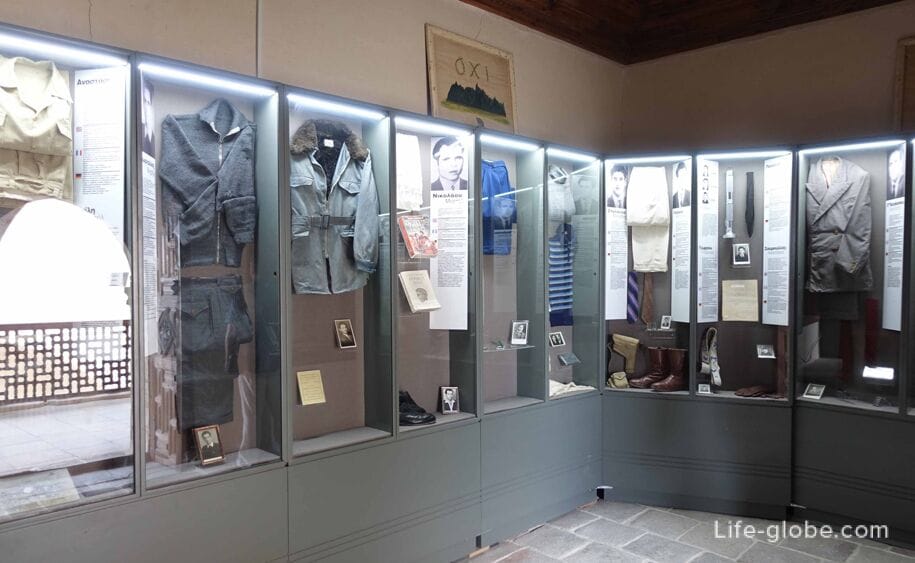
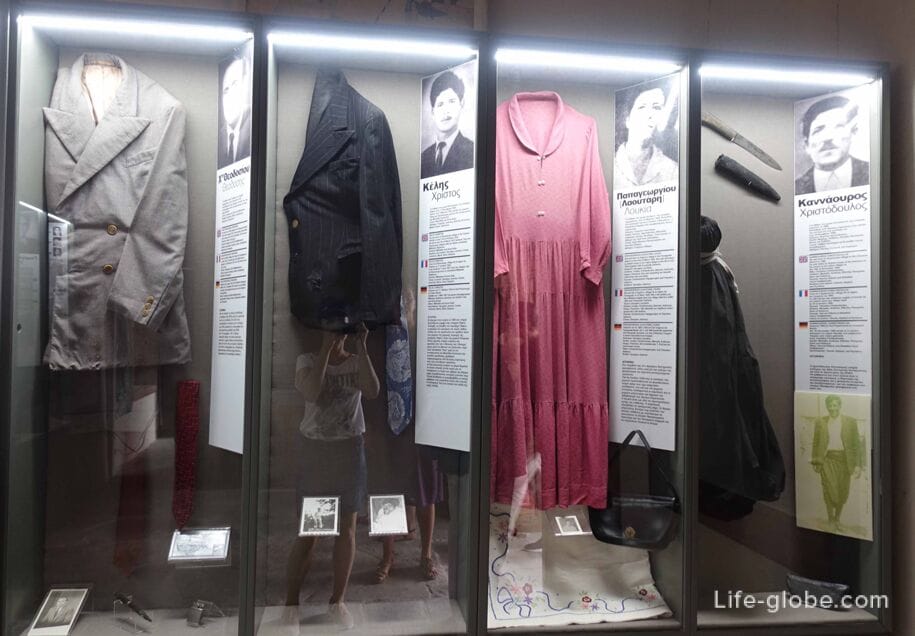

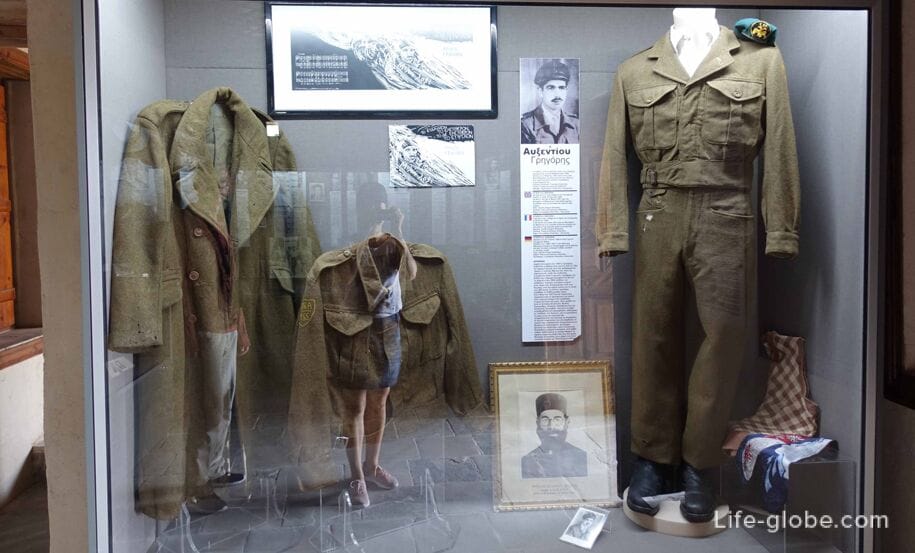
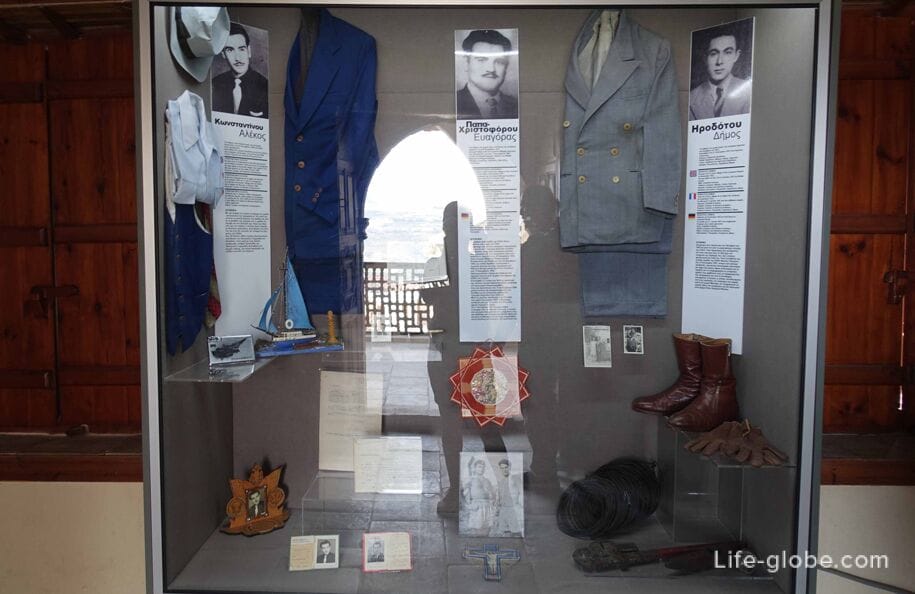

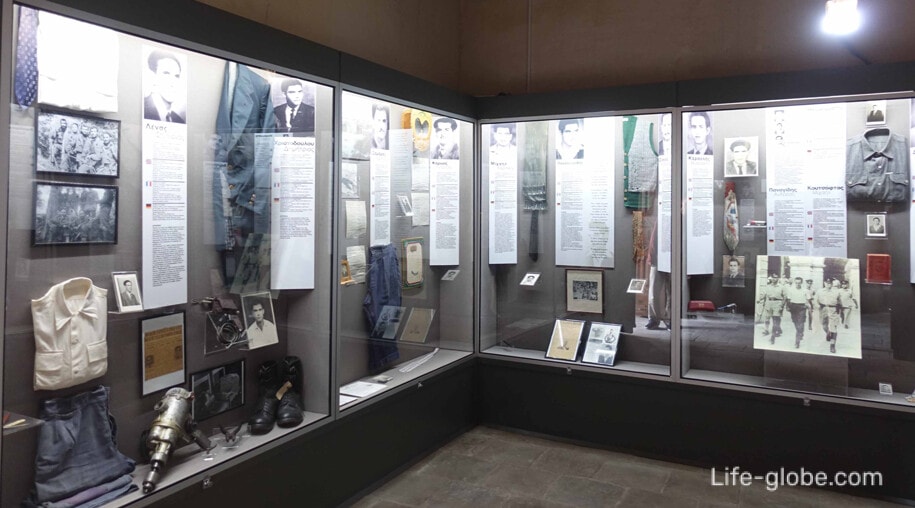
Other halls of the monastery today are hosts to folk art, art galleries, exhibitions of lace and also photo-exhibition with new and old photographs.

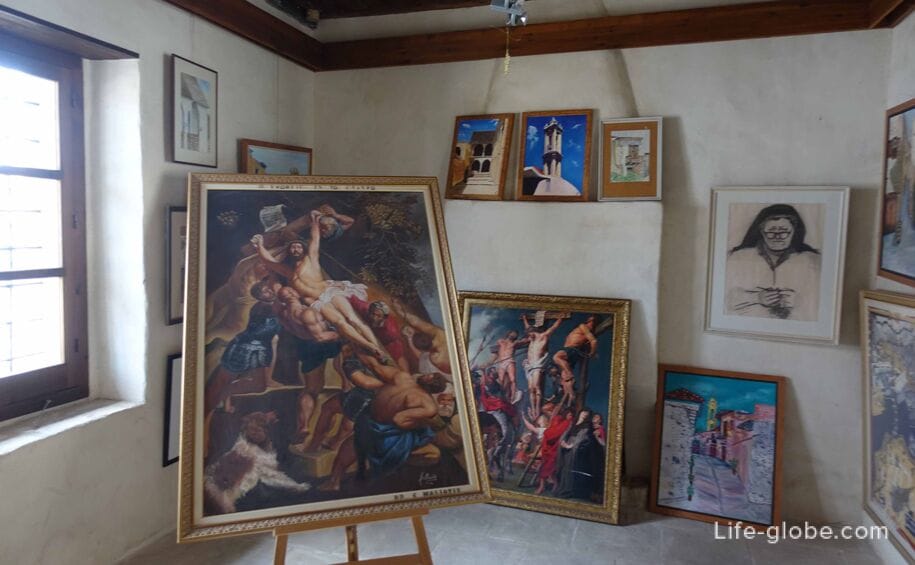
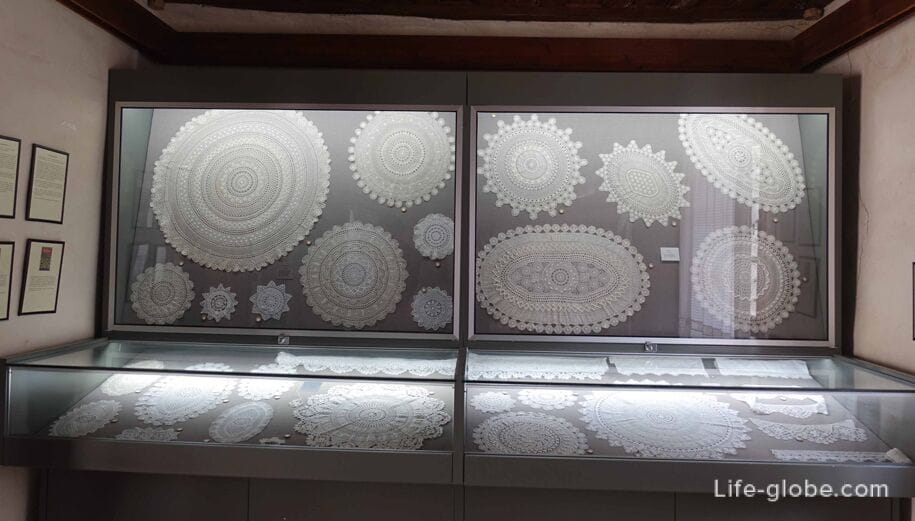

With the emergence of the monastery is associated to several legends, but the exact date of construction of the monastery and, or, originally, the chapel founded on the site of this monastery remains unknown.
One legend says that in ancient times the inhabitants of the village Coopera, previously located on the site of the modern village of Omodos, saw fire in the Bush, where today stands the monastery. When day dawned, the most brave of the residents went to the place where he saw the brightened, but did not find anything, not even traces of a small fire. This phenomenon was repeated for several nights. Not finding anything around, people began to dig at the place where, in their opinion, they saw the fire. After a brief excavations residents discovered a small cave in which they found the true Cross. To thank the Lord, the people, the forces of the entire village, built a chapel over the cave and kept "his treasure" there, the chapel became the place of worship. With the passage of time the chapel expanded and was turned into a rich monastery with many monks and great wealth - not only in Cyprus but also abroad - outbuildings in Constantinople (now Istanbul) and real estate in Russia.
According to another legend about the Sign that appeared to the Queen Helena (327 year), returning from Jerusalem with the Holy Cross and peresadovka a storm in a small Bay off the coast of Cyprus. It is a vision, how to think, forced the Queen to make the decision to found a monastery Stavrovouni, and some other monasteries on the island, to each of whom she gave a piece of the true cross. Anyway, the piece of Tree death throes were donated by Elena monastery during her visit and throughout the history of the monastery was the main Shrine and pride.
The early history of the monastery is little known. One of the first references are found in Chronicles of Leonti Maher "Story of the sweet land of Cyprus" and in Bulle 1700, issued by the Sultan of the great Ports. In the annals of the 17th century, written by Neophyte Rodinson indicated that, in addition to the particles of the true cross, preserved in the monastery of the Holy a piece of hemp rope (the Bonds of Christ), where Christ was tied to the cross. In 1735 pilgrim Vasily Grigorovich-Barsky added that the line stored in the monastery, contains traces of the blood of the crucified.
It is believed that the monastery complex, and also the village of Omodos is now one of the tourist centers of the island, was formed following the little Church, built in the year 210.
Its modern appearance of the monastery began to acquire in 1816, and in the mid-19th century ancient Byzantine Church was completely rebuilt, and in its place arose a massive three-aisled vaulted Basilica, inside the fortified arches-ribs, and the outside - arched niches, large Windows inside which the building fell natural light.
Entrance to the monastery and in the Church and the Museum room - free (free).
Opening hours of the monastery: daily from 9:00 to 19:00 (April-September), from 9:00 to 16:00 (October-March).
Attention! Opening hours of the monastery may vary, please check the information before visiting.
The monastery is in the Troodos mountains, Larnaca district, the village of Omodos. Approximately 40 km from the historic centre of Limassol and 86 kilometres from the centre of Nicosia.
To reach the monastery, you can:
1. By taxi or car from any point of Cyprus. Cheap car hire in Cyprus...
2. Bus No. 40 from Limassol city centre, bus station Old hospital (Leontiou EMEL Central bus station) to the bus stop in the village of Omodos, a 10-minute walk from the monastery.
A journey time of 1 hour 40 minutes 1 hour 50 minutes. The fare is € 1.50.
The schedule of the bus:
- from Limassol to Omodos: Monday - Friday 10:00, 11:30, 13:35, 16:30; Saturday 11:30, 15:15; Sunday 09:30, 15:15;
- of Omodos in Limassol: Monday - Friday 06:00, 07:20, 09:30, 15:00; Saturday, Sunday 07:30, 14:00.
Attention! The timetable and fares can vary, please check before visiting.